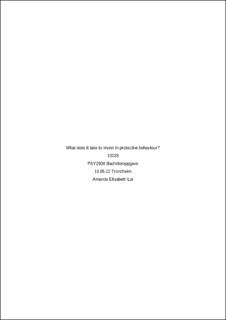| dc.description.abstract | Protection motivation theory (PMT) has become a leading theory to explain the cognitive processes for risk management. The PMT suggest that cognitive likelihood evaluations predict protective behaviour. Consequently, several studies have focused on the effect of cognition on predicting intentions for protective behaviour against floods. However, empirical findings show contrasting evidence for the link between cognitive risk perception and protective behaviour. Additionally, recent studies have shown that affect is a better predictor of protective behaviour against flooding. With this background, the first aim of the current study was to test part of the PMT model by studying if affect (degree of worry) could be a better predictor of protective behaviour, than cognitive likelihood evaluations. The second aim was to test if affect (degree of worry) act as a moderator of coping appraisal in predicting intentions for protective behaviour. This study presents the result of a survey with 293 respondents from a Norwegian population. Two hypothesis were tested using regression- and moderation analysis. The current study found affect as a significant predictor, but risk perception likelihood was not a significant predictor of intentions for protective behaviour, when including affect (degree of worry). In addition, no significant result of affect as a moderator of coping appraisal in predicting protective behaviour, was found. This suggest that affect is central in risk perception processes, and that predictors of intentions for protective behaviour have a complex relationship. | |
